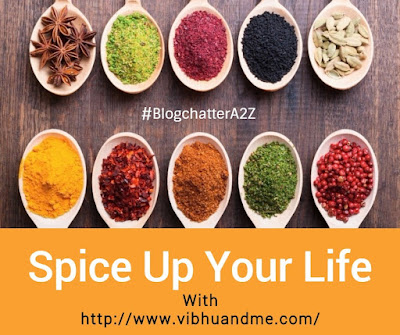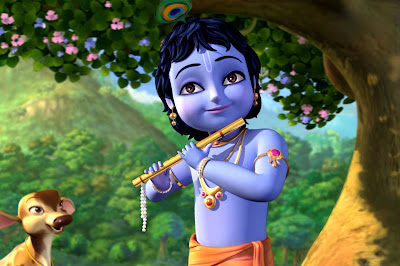For most people, a Tea without ginger is tasteless. My family, on in-law's side, belongs to this category only. And the same habitual pattern is there in my house as well. No matter what the weather is, every single cup of tea at my house must have a ginger hint. If it is stream summers, I reduce the quantity when I am preparing the Tea BUT it should be there. Ginger is amongst the most treasured spices in India and for many, fresh ginger is a necessary ingredient of cooking. However, in this post, I am not going to write about ginger. It is 'D' day of #BlogchatterA2Z so I would go with writing about Dried Ginger (सौंठ), a variant of ginger only.
D for Dried Ginger
For many of us, whether it is dried ginger or fresh ginger, it is all the same thing, right? BUT there is a big difference in these two forms. Both dried and fresh ginger protect our body and helps in staying healthy. Howbeit, dried ginger has been a traditional herbal remedy for thousands of years in Indian and Arabic medicine. It contains a higher concentration of two active compounds Shogaol and Gingerol, which is about three times more than in fresh ginger. Raw ginger has high levels of Gingerol, which are the predominant compound found in this herb. However, when dried, many of the Gingerol is converted to Shogaol. Thus dried ginger has a spicier flavor which is more pungent than raw ginger. Very easily the raw ginger can be converted to its dried form. And once dried, it can be stored and used for almost a year. In most of the Indian houses, the powder form of died ginger is commonly used. Remember SonthChatney?
History of Ginger
The word ginger comes from the Sanskrit word, Srngaveram, which means 'shaped like a horn'. This name only describes that it is a root. The very first mention of ginger is found in the writings of Confucius in the 5th century BC. Ginger is native to Southeast Asia. It was probably used first for medicinal purposes in China or India, and it eventually was introduced in Europe during the 11th century. Although Europeans considered it simply a luxury spice initially, by the 13th century it was already a staple food and an essential on many herbal medicines. I couldn't find since when the dried form of ginger is being used in Ayurvedic medicines. But, it is mentioned in many ancient Ayurvedic literatures. In Ayurvedic chemistry, dried Ginger is called SHUNTI. The one which is SNIGDH (oily) and USM (hot).
Health Benefits of Dried Ginger as per Ayurveda
Full of anti-oxidants, dried ginger is being used in Ayurvedic treatments since ages. As dried ginger have both of the medicinal compounds (Gingerol and Shogaol), it becomes more useful and therapeutic item in Ayurvedic use. It is believed that fresh ginger cools you down and is very effective for fever reduction while dried ginger is required for keeping our body healthy and warm. That's why in Indian, we consume dried ginger more during winters. In North India, it is a mandatory item of all winter delicacies like Laddoo, Chatny, Chikki, Daal (lentil) and Kadhi. It boosts immunity, maintains joint health and keeps your stomach happy. Some other benefits of dried ginger are as below:
Make a paste of dried ginger powder, clove, and salt and consume this twice a day to cure a cold.
How to buy
Dried ginger is available for purchase at many grocery stores, kirana stores, and ayurvedic stores. You can also buy the powder form of dried ginger which is easy to use and store.
(I am taking part in #BlogchatterA2Z and today’s letter is 'D'.)
You can read my other #BlogchatterA2Z posts here :
D for Dried Ginger
For many of us, whether it is dried ginger or fresh ginger, it is all the same thing, right? BUT there is a big difference in these two forms. Both dried and fresh ginger protect our body and helps in staying healthy. Howbeit, dried ginger has been a traditional herbal remedy for thousands of years in Indian and Arabic medicine. It contains a higher concentration of two active compounds Shogaol and Gingerol, which is about three times more than in fresh ginger. Raw ginger has high levels of Gingerol, which are the predominant compound found in this herb. However, when dried, many of the Gingerol is converted to Shogaol. Thus dried ginger has a spicier flavor which is more pungent than raw ginger. Very easily the raw ginger can be converted to its dried form. And once dried, it can be stored and used for almost a year. In most of the Indian houses, the powder form of died ginger is commonly used. Remember SonthChatney?
History of Ginger
The word ginger comes from the Sanskrit word, Srngaveram, which means 'shaped like a horn'. This name only describes that it is a root. The very first mention of ginger is found in the writings of Confucius in the 5th century BC. Ginger is native to Southeast Asia. It was probably used first for medicinal purposes in China or India, and it eventually was introduced in Europe during the 11th century. Although Europeans considered it simply a luxury spice initially, by the 13th century it was already a staple food and an essential on many herbal medicines. I couldn't find since when the dried form of ginger is being used in Ayurvedic medicines. But, it is mentioned in many ancient Ayurvedic literatures. In Ayurvedic chemistry, dried Ginger is called SHUNTI. The one which is SNIGDH (oily) and USM (hot).
Health Benefits of Dried Ginger as per Ayurveda
Full of anti-oxidants, dried ginger is being used in Ayurvedic treatments since ages. As dried ginger have both of the medicinal compounds (Gingerol and Shogaol), it becomes more useful and therapeutic item in Ayurvedic use. It is believed that fresh ginger cools you down and is very effective for fever reduction while dried ginger is required for keeping our body healthy and warm. That's why in Indian, we consume dried ginger more during winters. In North India, it is a mandatory item of all winter delicacies like Laddoo, Chatny, Chikki, Daal (lentil) and Kadhi. It boosts immunity, maintains joint health and keeps your stomach happy. Some other benefits of dried ginger are as below:
- A promoter of digestion.
- Balances Vata and Kapha.
- A good cardio-tonic.
- Relieves dizziness, menstrual pain, motion sickness and constipation.
- Useful in rheumatoid arthritis, anemia and bloating.
- Relieves respiratory disorders.
- A magical remedy for morning sickness.
- Helps in swelling, edema, and inflammation.
- Being hot in nature keeps the body worm.
- Being oily in nature, it absorbs extra moisture/fat in the intestine.
- Improves metabolism
Make a paste of dried ginger powder, clove, and salt and consume this twice a day to cure a cold.
How to buy
Dried ginger is available for purchase at many grocery stores, kirana stores, and ayurvedic stores. You can also buy the powder form of dried ginger which is easy to use and store.
(I am taking part in #BlogchatterA2Z and today’s letter is 'D'.)
You can read my other #BlogchatterA2Z posts here :











Ginger is my favourite. I know about its benefits but you shared everything in details. Good informative post.
ReplyDeleteAlso known as Soonth, Sunth or Sukku in India, dried ginger is, as the name suggests, nothing but fresh ginger which has undergone a drying process by first washing and soaking overnight and then drying it out in the sun. Sometimes calcium carbonate is added to bleach the dried ginger, which gives it a whitish covering. Dried ginger is mostly used in its powdered form which is easy to store having a long shelf life of more than six months.
ReplyDeleteI always knew ginger has many health benefits but somehow i don't like ginger. But i am forced to use ginger while cooking. Reading this article, usage of ginger will become mandatory i guess.
ReplyDeleteDo check my post
Dating #A2Z challenge
I used to love making and consuming huge quantities of adharak chai in Delhi where I grew up. My father is a ginger fan. So much so, that at one point he used to slip in a bit of ginger into every dish my mom made when she wasn't looking. And when we sat for lunch or dinner we would find these ginger pieces attacking our palettes. :). I enjoyed learning about Shagaol and Gingerol and dry and wet ginger. Great going.
ReplyDeleteDry ginger powder mixed with a little salt is given to a new mother to be eaten as a first morsel with rice and ghee in Andhra Pradesh. This will boost her immunity and increase digestion after delivery. I used to love this!
ReplyDeletewww.balconysunrise.wordpress.com
my mom gave this after my delivery. and drinking dry ginger tea is good for digestion. interesting read!
ReplyDelete